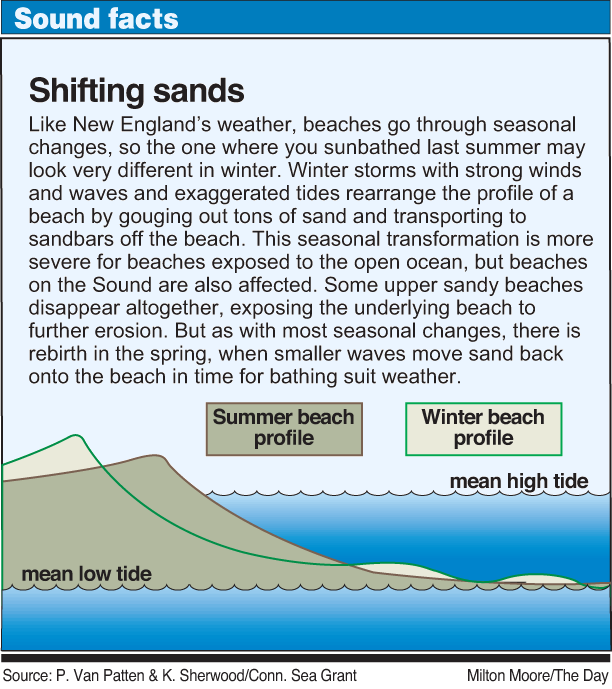Typically, beaches and dunes undergo a seasonal transformation from a “summer” beach to a "winter" beach. A summer beach has a wide, well-developed berm often with a vegetated dune where American beach grass grows seaward onto the berm. A winter beach is lower, may not have a berm, and often shows signs of loss of beach grass. These differences are caused by seasonal storms and by differences in waves formed by local winds that vary seasonally. Because the Connecticut shoreline is buffered by Long Island, the seasonal variation in winds is minimized relative to shorelines directly adjacent to the ocean. Winter beaches are generally steeper and narrower, while in the summer beach, smaller, calmer waves dominate, and beaches are generally wider and have a gradual slope.
Seasonal Beach Shapes

From Sound Facts: Fun Facts about Long Island Sound.